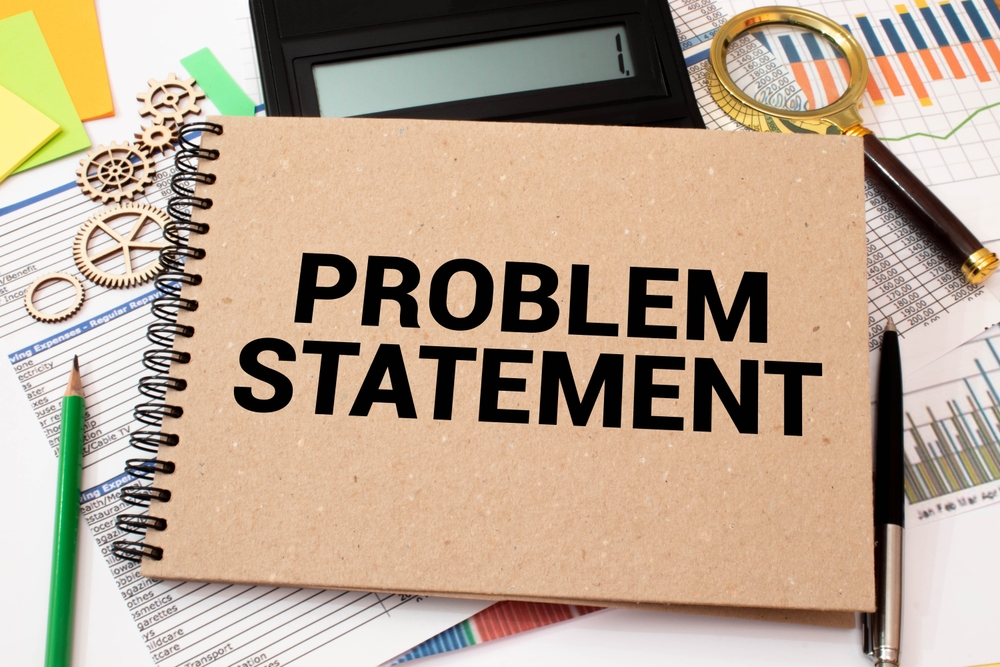Sooner or later, every business is bound to hit a snag. No business operates perfectly smoothly; whether it’s logistics, personnel, or marketing, you’re going to encounter a problem that threatens to overwhelm your organisation. When that happens, it’s important to keep a level head and approach the situation as a problem to be solved rather than a disaster in waiting.
One way you can do this is to prepare a business problem statement to help your organisation understand what’s going on and face the problem head-on. You might not have heard of a business problem statement before, and if you haven’t, you’re going to wonder how you ever managed to cope without writing them before. Let’s take a look at how to write a good business problem statement!
Define your problem
The first thing you should do is to define your problem. Whatever it might be, try to be as concise and practical as possible. Don’t vacillate around the issue and don’t obfuscate it; be honest with yourself. What exactly is the issue in simple terms? Remember your audience; try to write it so that the audience you’re writing for, whether it’s shareholders, employees, or a board of directors, will understand it.
Example: “(X) is a serious problem that is currently facing our business.”
Explain why your problem is an issue
Some problems are pretty minor for businesses; a traffic jam resulting in the CEO arriving late, for instance, probably won’t be a major issue in the grand scheme of things. However, if the problem you’re facing has caused you to construct a business problem statement, it’s probably pretty serious. Think about what the problem could do if left unchecked. Which areas of the business will be affected? What knock-on effects could the problem have?
Example: “This problem could have serious consequences for the business. For instance, if left unchecked, (Y) could happen, leading to (Z). In addition, we could face (A), (B), and (C). Finally, the problem could lead to (D), which could, in turn, cause (E).”
Address individual departments
One way you can break down a business problem statement is to address each particular department and explain why the problem will directly affect them. Sometimes, individual departments and employees can have trouble conceptualising the business as a whole, so explaining what effect the problem could have on their particular area of operations is a good idea.
Example: “With particular reference to the customer support department, one area where this problem could have a serious impact is (X). This could cause efficiency to decrease significantly and could also lead to a less satisfactory operational environment for customer support personnel.”
Analyse what caused the problem
Simply presenting the problem may not be enough. Depending on your particular issue, you may want to go into a little extra detail regarding the situation that has led to the problem. What caused it? How can you avoid that happening again in the future? Understanding the root causes can help you to address any similar problems that may crop up again.
Example: “In our estimation, this problem has occurred due to a variety of factors. Chief among them is (X), as well as (Y), and, to a lesser extent, (Z).”
Use numbers and statistics
Instead of simply explaining the problem qualitatively, it may help you to put the issue into numbers. What kind of financial or operational impact could your problem have on your business? If you can express this in concrete statistical terms rather than abstract qualitative terms, it could help the more number-oriented of your employees and departments to comprehend the problem better.
Example: “This problem could lead to (X)% reduced profit for this quarter.”
Be concise
Although including as much information about the problem as possible is good, you should also try to make sure that you’re being as concise as possible. Overly explaining a problem will only lead to confusion or misunderstanding, and that’s the last thing you want when you’re writing a problem statement. Keep things as simple as they can possibly be while also making sure you’re including all of the pertinent information about the problem.
Example: “(X) could lead to serious issues for the company later down the line.” instead of “(X) could represent a serious roadblock for our company with regards to future operations and could also present issues for various departments, many of which will feel the effects more keenly than others.”
Suggest solutions
No business problem statement is complete without suggestions regarding solutions. If you simply present the problem and don’t present potential solutions to it, then your document will come across as pessimistic, which won’t look good to employees, shareholders, or anyone else for whom the document is intended. Think carefully about the problem and don’t leave any solutions out.
Example: “One way in which we propose to solve this problem is (X). While we understand that this could lead to (Y), we believe that the consequences of (Y) are more favourable to us than the potential consequences of the problem itself.”
There’s no definitive way to write a business problem statement. The document is going to look different depending on your business, your audience, and the nature of the problem. However, it’s our belief that the list above will give you a solid starting point for almost any problem your business might face, as well as an idea of how to tackle writing a statement summarising said problem.


